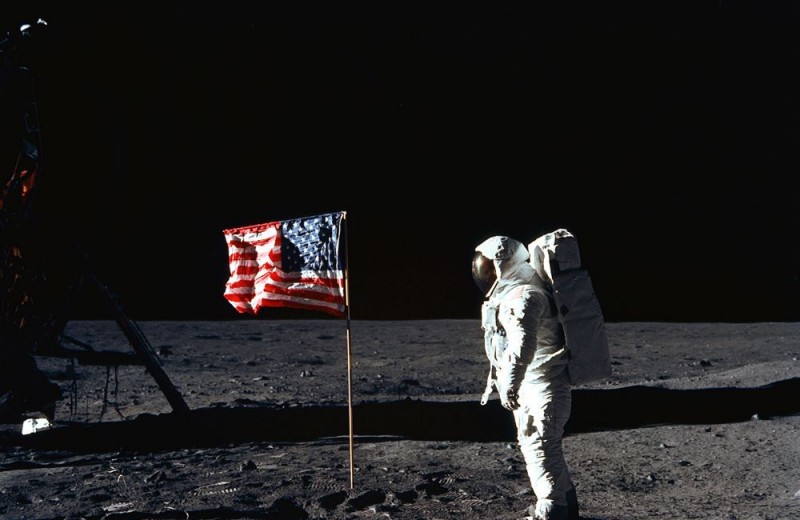
The Apollo 11 moon landing in 1969 marked a significant milestone in human history. It was a monumental achievement that showcased the remarkable capabilities of science, technology, and human determination. This historic event captivated the world's attention and paved the way for future space exploration endeavors. In this article, we will delve into the details of the Apollo 11 mission, exploring its purpose, the journey to the moon, and the impact it had on science and society.
Introduction: A Giant Leap for Mankind
The Apollo 11 mission, launched on July 16, 1969, was a daring expedition to land humans on the moon for the first time in history. Led by astronauts Neil Armstrong, Buzz Aldrin, and Michael Collins, this ambitious endeavor aimed to push the boundaries of human exploration and scientific discovery. The successful outcome of the mission would forever change our understanding of the universe and ignite a sense of wonder and curiosity among people worldwide.
The Vision and Purpose of the Apollo 11 Mission
The primary goal of the Apollo 11 mission was to demonstrate America's technological and intellectual prowess during the Space Race, a competition with the Soviet Union to achieve milestones in space exploration. President John F. Kennedy's visionary speech in 1961 set the objective of landing a man on the moon and returning him safely to Earth before the end of the decade. The Apollo program was established to fulfill this ambitious vision.
Preparations and Training: Building Towards Success
The success of the Apollo 11 mission was the culmination of years of meticulous planning, rigorous training, and technological advancements. Astronauts underwent extensive training, including simulations, physical conditioning, and mission-specific drills. Engineers and scientists worked tirelessly to develop the necessary spacecraft, the Saturn V rocket, and the Lunar Module (LM), which would be crucial for the lunar landing.
Blast Off: Launching towards the Moon
On July 16, 1969, the Apollo 11 mission embarked on its historic journey. The Saturn V rocket propelled the spacecraft into orbit, where it would eventually travel towards the moon. Over the course of three days, the crew endured the challenges of space travel, including the absence of gravity and living in a confined space. The astronauts relied on precise navigation, communication, and life support systems to ensure their safe passage.
The Lunar Module: Eagle Has Landed
As Apollo 11 approached the moon, the Lunar Module, named "Eagle," separated from the Command Module, with Armstrong and Aldrin aboard. Collins remained in lunar orbit, coordinating communications and conducting experiments. The descent of the Lunar Module towards the moon's surface was a critical and nerve-wracking phase. Finally, on July 20, 1969, Armstrong announced those iconic words, "The Eagle has landed."
Stepping onto the Moon: "That's One Small Step for Man..."
Neil Armstrong emerged from the Lunar Module, becoming the first human to set foot on the moon's surface. His famous words, "That's one small step for man, one giant leap for mankind," echoed across the globe, symbolizing the achievement of an audacious dream. Buzz Aldrin joined him shortly after, and together, they conducted experiments, collected lunar samples, and planted the American flag.
Scientific Achievements and Lunar Samples
The scientific goals of the Apollo 11 mission were as significant as the act of landing on the moon itself. The astronauts conducted experiments to gather data on the moon's geological composition, magnetic field, and cosmic radiation. They also collected and brought back approximately 47 pounds of lunar samples, providing scientists with invaluable insights into the moon's origins and evolution.
Return to Earth: The Journey Back Home
After spending approximately 21 hours on the lunar surface, Armstrong and Aldrin rejoined Collins in the Command Module. The return journey to Earth presented its own set of challenges, including re-entry into Earth's atmosphere and the precise coordination required for a safe splashdown in the Pacific Ocean. On July 24, 1969, the Apollo 11 mission successfully concluded, with the astronauts and lunar samples safely back on Earth.
Legacy and Impact of the Apollo 11 Mission
The Apollo 11 moon landing had a profound impact on science, technology, and society. It demonstrated the power of human ingenuity and innovation, inspiring future generations of scientists, engineers, and explorers. The advancements made during the Apollo program led to numerous technological breakthroughs, ranging from computing and telecommunications to materials science and medical research.
Conclusion
The Apollo 11 moon landing in 1969 was a momentous achievement that captured the world's imagination. It showcased humanity's unwavering determination to explore the unknown and pushed the boundaries of what was previously thought possible. The legacy of Apollo 11 continues to inspire us to reach for the stars, fostering a sense of wonder and curiosity that drives us towards new frontiers of discovery.
Google Doodle honors India's beloved street food, Pani Puri
SC Grants Ashish Mishra Extended Interim Bail Amidst Lakhimpur Kheri Violence
Remembering the Mumbai Train Bombing: Honoring the Victims and Reflecting on Resilience